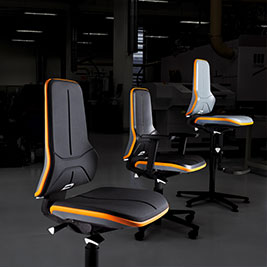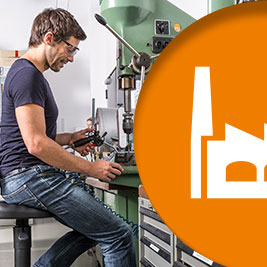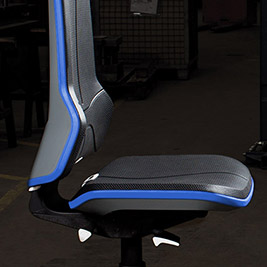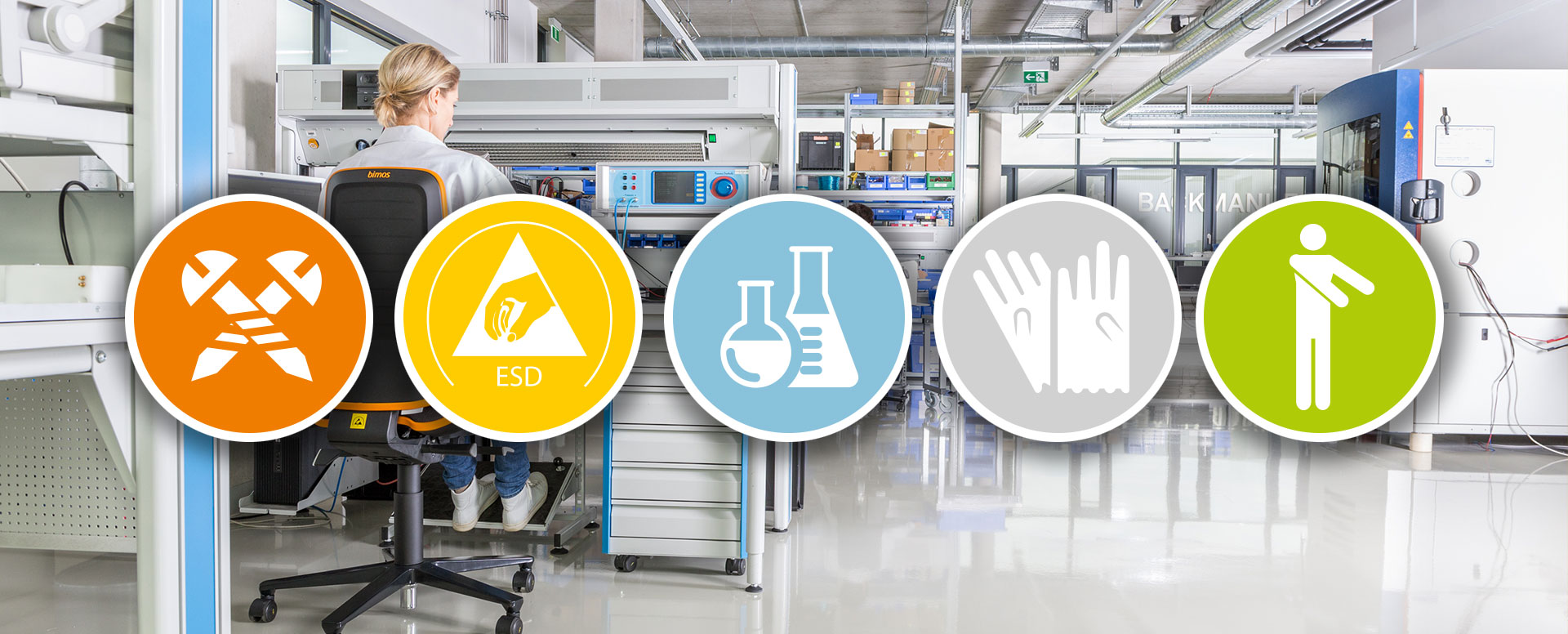
Industrial seating solutions - What makes the perfect chair?
Modern industrial workplaces are required in almost all sectors. Well-equipped workstations not only encourage an efficient approach to work, but also promote the health and wellbeing of the employees. What makes industrial workplaces so special is their variability; many activities are carried out standing up, others sitting down - a mix of the two is also possible. It has, however, since become clear that sitting for long periods on non-ergonomic industrial chairs quickly leads to damaged posture and lower productivity (see also BGIA Report 5/2008).Time spent just standing is not exactly the preferred option for employees either, however. Companies are taking this into consideration and providing suitable industrial stools and standing aids. As the multi-shift model is favoured in many businesses, workstations are also being used by a number of different employees. An ergonomic chair can help find the right setting for the respective user. Painful tension caused by an incorrect sitting position belongs in the past; anyone who is comfortable and happy at their workplace will also generally be more productive.
Topics explored further
- Environmental standards in Production
- Ergonomic industrial chair as first choice
- Industrial stool for a completely new seating experience
- Special industrial chairs in high-tech production
- Industrial chairs on the production line
- An industrial chair in the clean room - What is required here?
- Industrial chairs in the laboratory
- Standing work vs. Industrial chairs - The best solution
- Examples of industrial solutions
- 5 tips for an even better posture
Environmental standards in Production
Many manufacturers of industrial chairs adhere to the DIN ISO 14001 standard, which certifies that a company must take environmental issues into account during production and as part of the general organisation of the company. Furthermore, many industrial chairs are made from materials that can be almost completely recycled, even after often a decade of use.
Ergonomic industrial chair as first choice
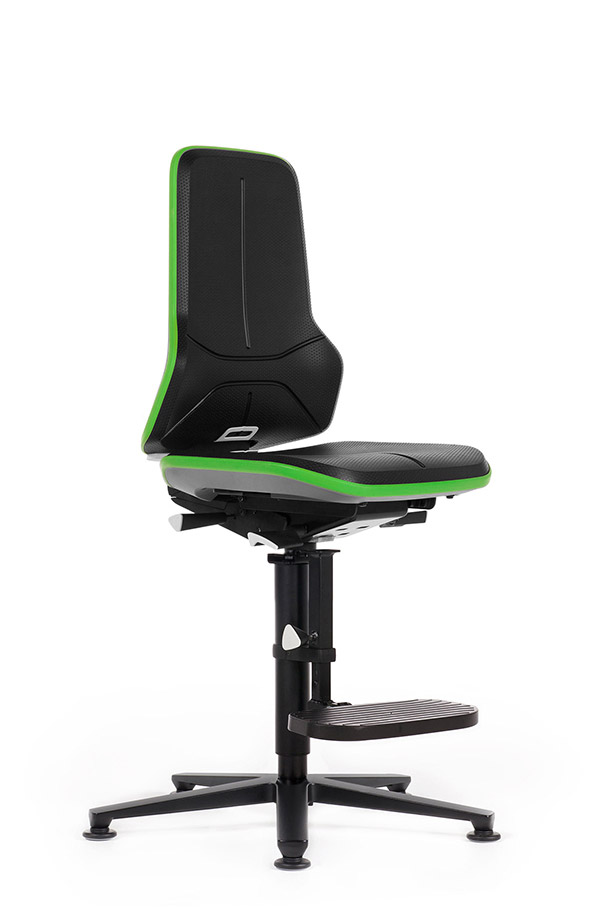
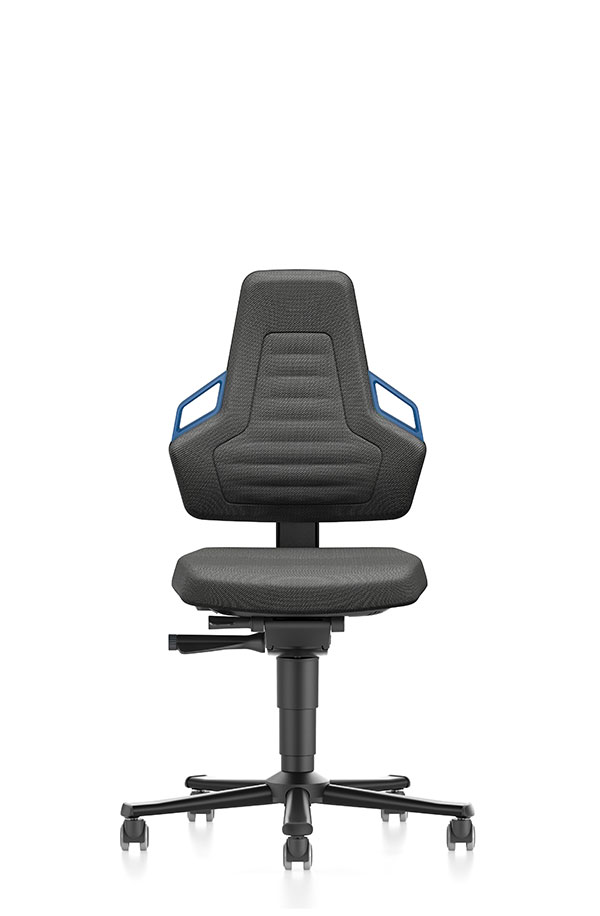
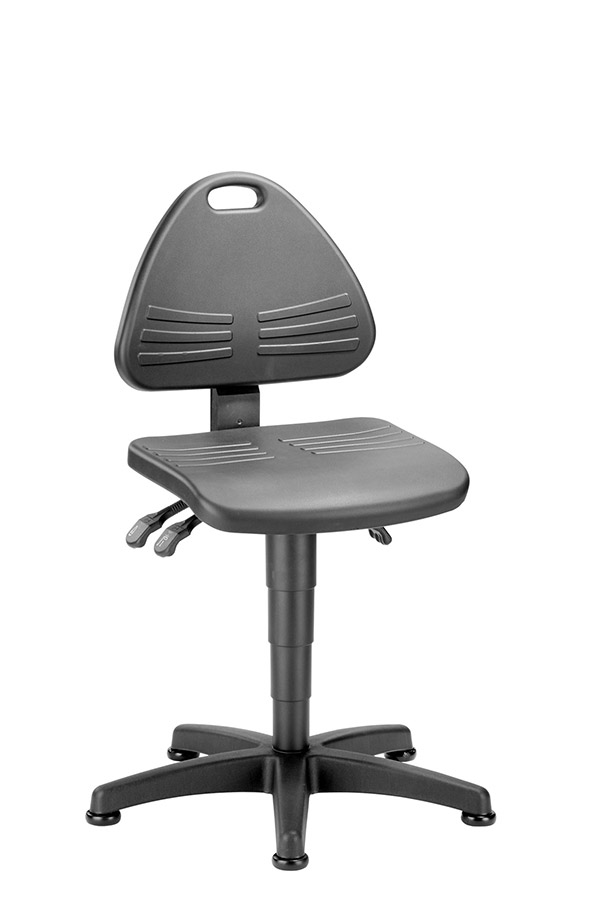
Poor posture is often the result of time predominantly spent sitting. If this is not corrected or is the case over longer periods, a variety of complaints are almost pre-programmed. Typical examples include back or neck pain, tension headaches or, at worst, slipped discs. It should thus be possible to adjust a work chair to meet ergonomic requirements, allowing for the necessary settings to be made quickly and thus enabling every employee to effectively contribute to his/her own wellbeing.
Industrial companies who are prepared to invest in appropriate chairs are thus investing in the health and wellbeing of their employees, not to mention maintaining or even improving production efficiency. An ergonomic chair is thus the sensible option as workstations in multi-shift operation are often used by a steady stream of different employees. As size, weight and other characteristics generally differ from person to person, an industrial chair with ergonomic setting options should almost be a matter of course.
Typical quality features that a chair used in industry and, for example, retail should offer include simple height adjustment using gas-pressure springs, adjustment of the armrests to the respective user, if necessary the option of adapting the backrest to the employee's movements and the support of good posture, in particular the use of sturdy surfaces that are simple to clean.
Industrial stool for a completely new seating experience
Unlike an industrial chair, an industrial stool allows for considerably more freedom of movement. Stools are provided by many companies, giving employees the choice of either standing or sitting when carrying out their work. A quick change of position is also possible. Just like ergonomic and industrial chairs, industrial stools are made from sturdy materials and can be adjusted in height. If industrial stools are only required for short periods, they can be stowed away without a problem, making cleaning of the work areas more efficient.
Special industrial chairs in high-tech production
In special work areas, for example in the chip and semiconductor industry, the industrial chair also needs to be ESD-capable. ESD stands for "Electrostatic Discharge" and is required when energy needs to be diverted without disturbing the work process. Just like other industrial chairs, the ESD chairs must also be ergonomic and produced to a high quality standard.
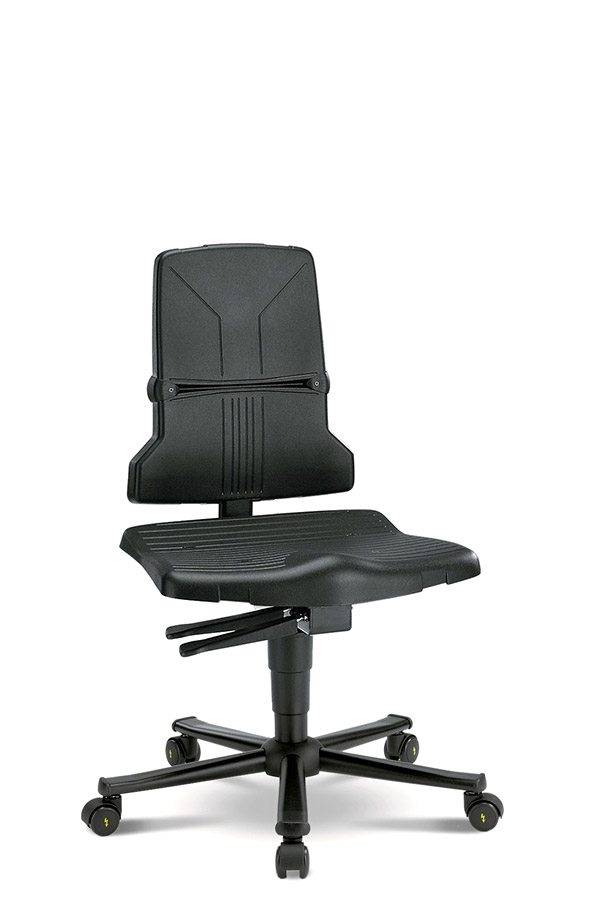
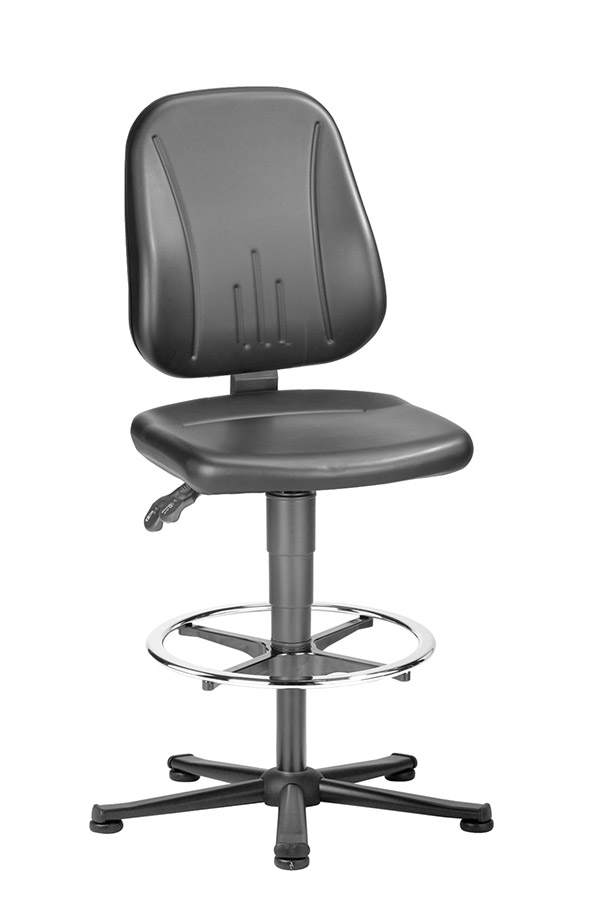
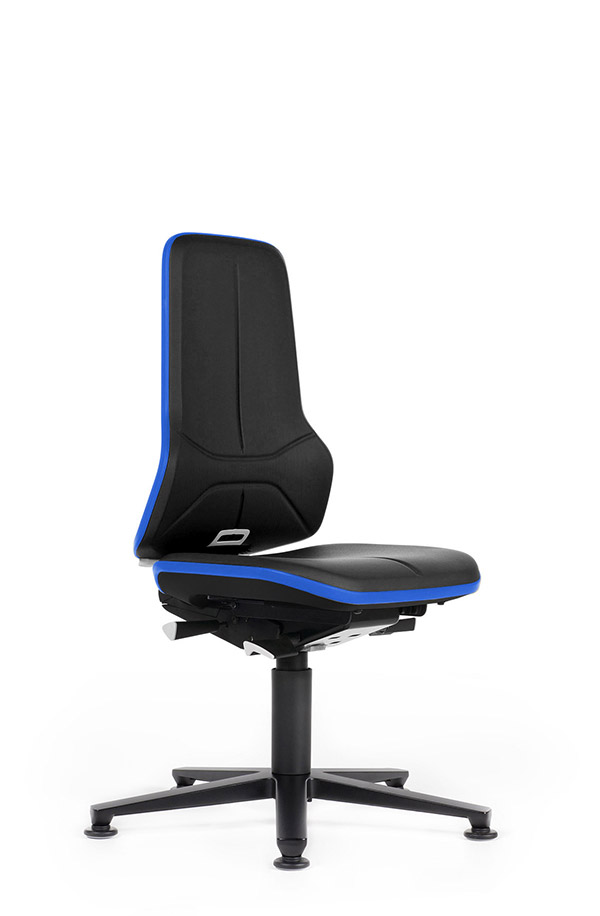
Industrial chairs on the production line
Even before Henry Ford, the first assembly line productions were found in several businesses. The small but significant difference between these businesses and the Ford plants involved plenty of movement: it was no longer the workers who decided when a part needed to be processed, but the automated assembly line. This assembly line also indirectly set the pace of work, which the workers had no choice but to follow due to the up- and downstream production steps. Driven by increasingly better production rates, attempts were made to improve production times - often to the detriment of the workers.
In many assembly lines, a majority of the work is performed standing up. Industrial chairs generally have a minor role to play here. There are, however, solutions here for an optimum design of the working environment. Industrial stools or standing aids are also possible, which provide employees with the option of resting while waiting or on empty runs. For example, industrial stools can be placed at the place of production and thus used as required. The workers can then decide themselves when and if they want to use a stool or standing aid when work slows down.
An industrial chair in the clean room - What is required here?
Industrial chairs for Reinräumeideally meet all ergonomic requirements, while still remaining comfortable. Normal office chairs are not an option here, with industrial chairs for clean rooms boasting special designs and materials that set them apart. An industrial chair with an open seat cushion would be unsuitable, for example, as just the action of sitting down here could distribute contaminating particles into the ambient air. Industrial chairs thus have special plastic covers that prevent this from happening. The same, of course, applies for stools, standing aids and other equipment.
Industrial chairs that prevent electrostatic discharge are also often required. This occurs in normal environments, caused simply by friction in some cases, however can lead to damage in sensitive areas such as the semiconductor industry. ESD industrial chairs thus need to be grounded to ensure any charges that have built up are discharged. The ESD protection is further improved by the specially optimised flooring, clothing and surfaces.
EXCURSUS “Clean Room”: In certain areas, sterile production environments are required as even the smallest of particles whirling around in the ambient air can disturb results or spread germs and bacteria which could have a detrimental effect on, for example, pharmaceutical products. Air filtration, access chambers, hygienic measures and other standardised methods ensure the purity of such rooms meets requirements and is maintained. In Germany, clean rooms and, for example, their use of industrial chairs is regulated by the standard DIN EN ISO 14644.
Industrial chairs in the laboratory

Strict hygiene regulations also need to be met in laboratories, however not exactly to the standard of clean rooms. It should also be possible to ergonomically adjust the chairs used here, and they should be made from sturdy materials that are easy to clean. Best of all, they should blend in with the other lab equipment used.
Standing work vs. Industrial chairs - The best solution
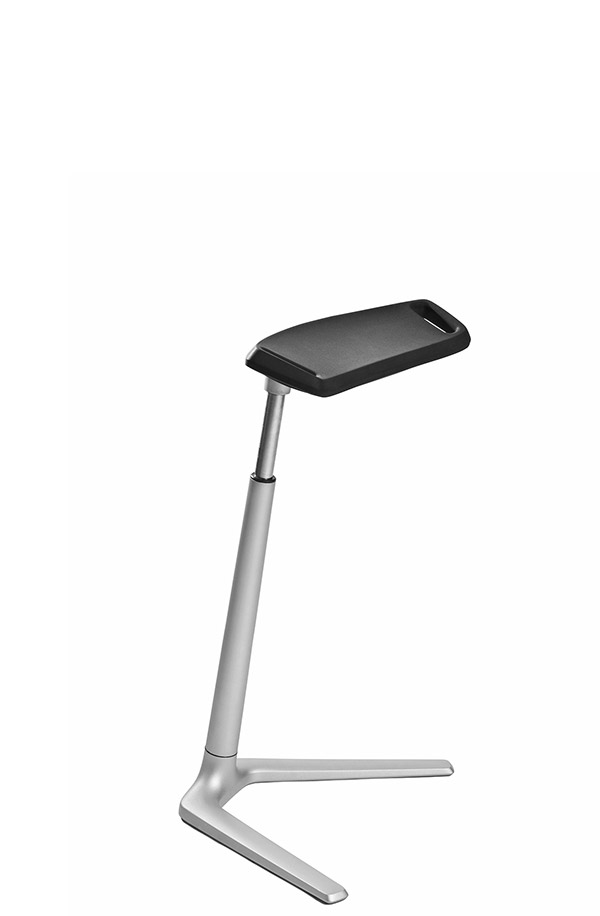
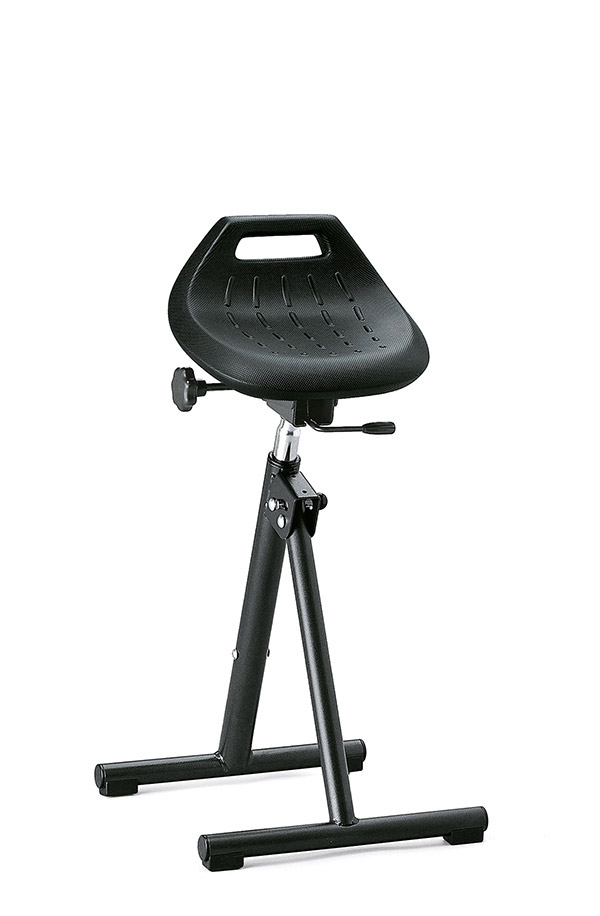
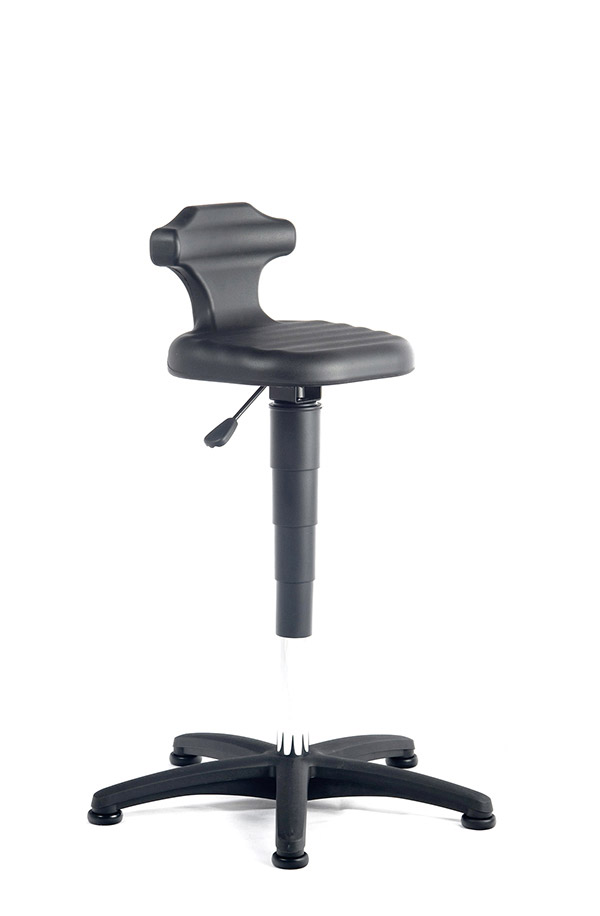
Many companies will now agree that the way in which the workplace is designed considerably influences performance, productivity and the wellbeing of employees. However, designing a workplace that is conducive to greater performance is not always easy; many of the (relatively simple) solutions for office spaces cannot be implemented in industrial environments or in sales. Here, the individual requirements of the employees also play a far greater role: while one employee prefers to sit while working, the other is far more productive when standing. However, if the working environment doesn't allow for seated work, classic industrial chairs can quickly reach their limits. Alternative solutions involving standing aids or industrial stools are thus required here.
Examples of industrial solutions
Whether stool, chair or standing aid, theoretically any kind of seating solution can be used in almost any environment. In many companies, the trend is clearly for height-adjustable work surfaces or, basically, working standing up. In addition to the classic industrial chairs for sitting, standing aids are also used to provide short-term relief. In any case, a regular change of posture provides the best opportunity to effectively prevent damage, as well as the resulting serious illness. If an investment is to be made in new chairs, there are a number of options here. Taking the employees preferences into consideration is recommended. For example, give them the chance to test out different models.
5 tips for an even better posture
If an ergonomic chair or industrial stool is already in use, posture can be further optimised in just a few simple steps:


back to overview
 print
print
